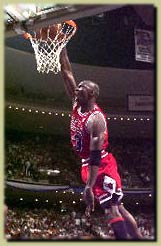Alex Singla, a senior partner of McKinsey and Company in Chicago for nearly 16 years, leads the McKinsey North American Service Operations Practice as well as the Financial Services Practice in the Midwest. In his free time, Alex Singla enjoys watching Chicago sports teams like the Bulls and the Blackhawks.
Between 1995 and 1996, the Chicago Bulls played what many consider to be the finest season of basketball in the history of the National Basketball Association (NBA). The Bulls, led by Michael Jordan and Scottie Pippen, had previously won NBA championships in 1991, 1992, and 1993. The Bulls began 1995 by winning 23 of their first 25 games. After losing their third season of the game to the Indiana Pacers the day after Christmas, the Bulls began an 18-game winning streak that carried into February.
Chicago lost back-to-back games once all season and endured three one-point losses during the final month of regular-season play to finish with a record of 72-10. In the 1996 NBA playoffs, the Bulls swept the Miami Heat with an average margin of victory of 23 points. The team subsequently defeated the New York Knicks four games to one and the Orlando Magic in a four-game sweep.
In the 1996 NBA Finals against the Seattle SuperSonics, the Bulls won the first three games by a combined 53 points, then dropped consecutive games for the first time in that postseason. The Bulls recovered to secure the championship with an 87-75 victory at home. The 1996 title would mark their first of a second three-peat.






